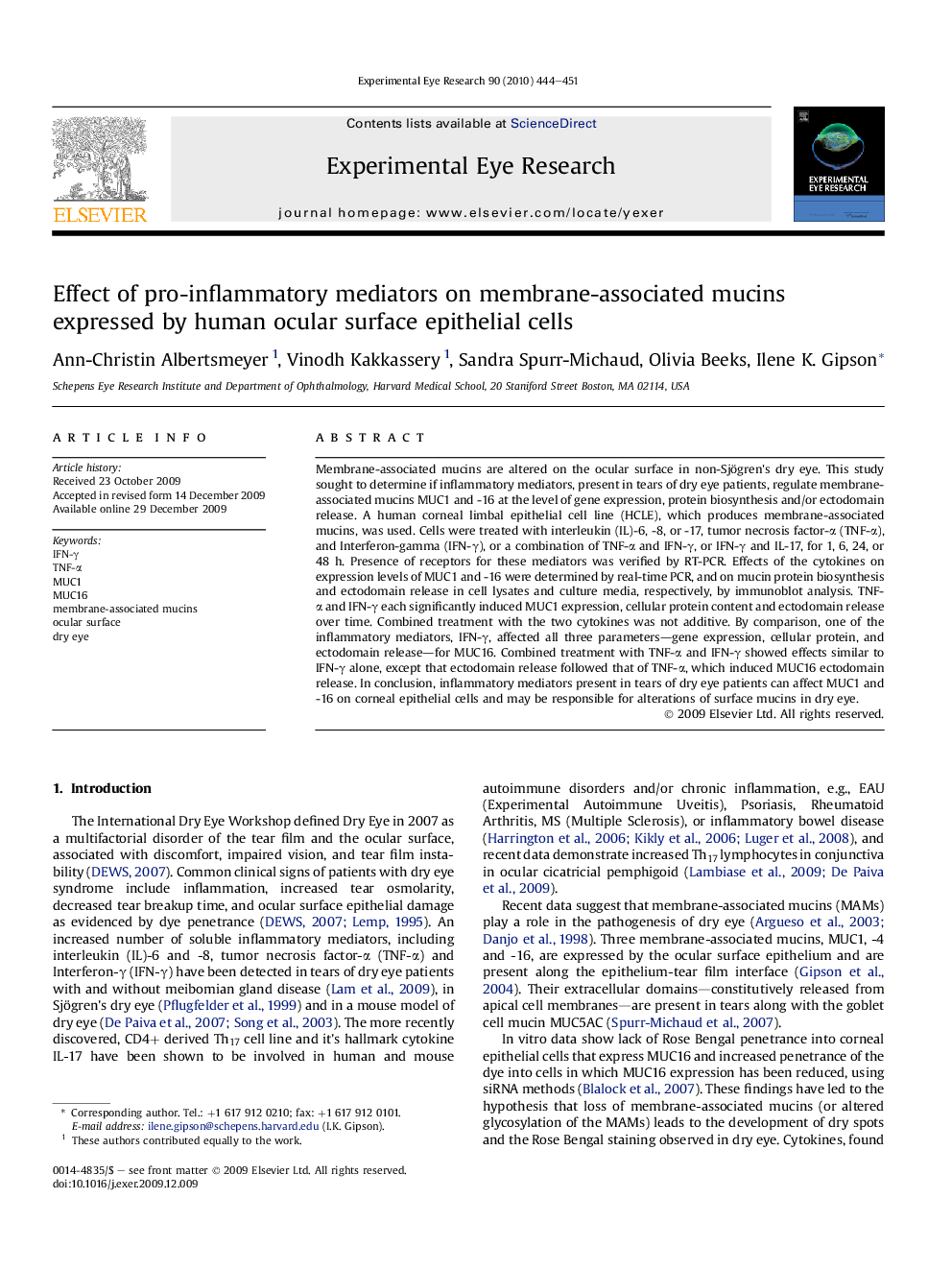| کد مقاله | کد نشریه | سال انتشار | مقاله انگلیسی | نسخه تمام متن |
|---|---|---|---|---|
| 4011855 | 1261167 | 2010 | 8 صفحه PDF | دانلود رایگان |

Membrane-associated mucins are altered on the ocular surface in non-Sjögren's dry eye. This study sought to determine if inflammatory mediators, present in tears of dry eye patients, regulate membrane-associated mucins MUC1 and -16 at the level of gene expression, protein biosynthesis and/or ectodomain release. A human corneal limbal epithelial cell line (HCLE), which produces membrane-associated mucins, was used. Cells were treated with interleukin (IL)-6, -8, or -17, tumor necrosis factor-α (TNF-α), and Interferon-gamma (IFN-γ), or a combination of TNF-α and IFN-γ, or IFN-γ and IL-17, for 1, 6, 24, or 48 h. Presence of receptors for these mediators was verified by RT-PCR. Effects of the cytokines on expression levels of MUC1 and -16 were determined by real-time PCR, and on mucin protein biosynthesis and ectodomain release in cell lysates and culture media, respectively, by immunoblot analysis. TNF-α and IFN-γ each significantly induced MUC1 expression, cellular protein content and ectodomain release over time. Combined treatment with the two cytokines was not additive. By comparison, one of the inflammatory mediators, IFN-γ, affected all three parameters—gene expression, cellular protein, and ectodomain release—for MUC16. Combined treatment with TNF-α and IFN-γ showed effects similar to IFN-γ alone, except that ectodomain release followed that of TNF-α, which induced MUC16 ectodomain release. In conclusion, inflammatory mediators present in tears of dry eye patients can affect MUC1 and -16 on corneal epithelial cells and may be responsible for alterations of surface mucins in dry eye.
Journal: Experimental Eye Research - Volume 90, Issue 3, March 2010, Pages 444–451